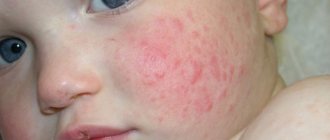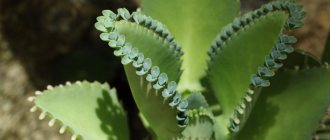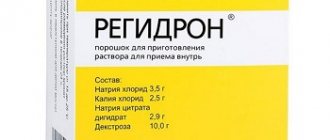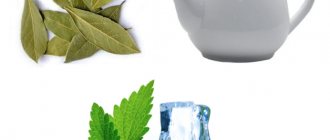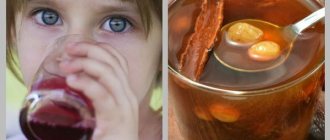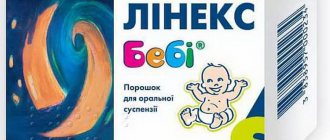Many parents try to use centuries-old natural herbal remedies that are used in folk medicine to treat their children. Aloe has long had a reputation as a universal remedy for many diseases. It is used in the production of cosmetic products that have a beneficial effect on the condition of the skin. The older generation firmly believes in the healing properties of aloe juice for runny noses for children, in its ability to cope with rhinitis and ease the well-being of a cold baby, for whom a runny nose causes serious discomfort, preventing them from breathing in the usual way. Proper and safe use of the plant juice provides effective assistance.
Healing qualities of aloe
Treatment of rhinitis in adults is not similar to the treatment of similar symptoms in children, who are often hypothermic and catch a cold. Almost all parents experience a child's runny nose. A stuffy nose makes it difficult for a child to sleep and eat. The baby is often capricious, not understanding what is happening to him. Caring mothers are looking for something to wash their child’s nose at home when they have a runny nose. Salvation can be a proven folk remedy of natural origin - aloe, which has bactericidal properties and can eliminate many problems with well-being. It is not for nothing that this inconspicuous plant, which has no decorative value, is found in almost every home.
Aloe, otherwise called agave, appears to be a houseplant with fleshy, spiky leaves of a bright green color.
Research conducted today has confirmed the results obtained empirically. It turns out that the properties of a medicinal plant depend on the composition of its juice, which contains more than 75 different biostimulants, natural antibiotics, antioxidants and vitamins. It is distinguished by its content of unique healing ingredients:
- essential oils;
- resinous substances;
- various enzymes;
- mass of amino acids;
- vitamin B12, not found in other medicinal plants.
The juice has many healing properties:
- anti-inflammatory;
- antimicrobial;
- wound healing;
- eliminating toxins;
- restorative.
The presence of amino acids helps children produce special proteins that help strengthen immunity. Phytoncides successfully cope with viruses and microbes.
On a note! For allergic rhinitis, aloe juice can only help reduce swelling of the mucous membrane; it will not solve the main problem. It is necessary to consult with an allergist to find out what exactly the irritant is and eliminate it.
Correct use of the product improves the body's defenses, helping to cope with various diseases. The entry of agave in pure or diluted form into the nose of a child with a runny nose causes a decrease in swelling of the mucous membrane and improves breathing, and when it penetrates into the blood, it promotes its deoxidation, weakening or destroying toxins. The main advantage of the product is its direct effect on the infection.
About aloe
An effective traditional medicine is aloe juice (agagave).
It has long been widely known for its medicinal properties.
This plant is used not only as a medicinal product, but it is also used in cosmetology.
There are about 300 varieties of aloe in the world. It is used in the treatment of runny nose in children and adults.
This plant is unique in its composition. Aloe contains many vitamins, enzymes, mineral and resinous substances, amino acids.
Its main and main advantage is considered to be the presence of vitamin B12, which is important for the body, which is not found in other medicinal plants. Aloe juice relieves inflammation, kills harmful germs and microorganisms, has a wound-healing effect, promotes the regeneration of damaged tissue, and also helps the human body cleanse itself of toxins.
The healing effect of the juice of this plant for a runny nose manifests itself in the form of relieving symptoms of swelling of the nasal passages . When it enters the blood, this plant cleanses the blood of waste products of harmful viruses and bacteria, helping the body quickly cope with this pathology. The positive effect of aloe juice is not only to ease breathing during this disease, but also to eliminate the causes of the development of this disease.
Features of treatment with different types of agave
There are more than 20 types of aloe, but not all have healing qualities. Most often, two types are grown at home - aloe vera and aloe vera, the effects of which are not entirely the same. The first of them can grow up to 4 meters, has a mass of powerful leaves, the 3-year-old ones with slightly withered tips are the most useful. The plant is effectively used in cosmetology and medicine. Preparations made from it have proven themselves to be excellent in the treatment of dental and dermatological pathologies. The product has a laxative effect, stimulating the functioning of the gallbladder, as well as general regeneration and immune defense.
Aloe tree is a succulent that looks like a miniature tree with a thick trunk, large leaves and many side shoots. In medicine it is used as an immunostimulating drug and a natural antibiotic. The drug is distinguished by choleretic properties, can affect appetite and digestion, and helps well in the treatment of ENT diseases. Studies have confirmed its effectiveness in cases of radiation damage, oncology, trophic ulcers and blood problems.
Important! The juice of the plant can be used independently only at the initial stage of the disease. Prior consultation with a pediatrician is required before use. In case of more serious problems, one drug is not enough; it should be combined with medications. Delaying therapy is dangerous due to the possibility of complications.
Chemical composition of the plant and benefits in the treatment of runny nose
Aloe has:
- antibacterial;
- anti-inflammatory;
- antiviral and moisturizing properties.
The composition of the agave helps:
- reduce swelling of the mucous membranes;
- makes breathing easier;
- relieves runny nose and heals damaged tissue.
The chemical composition of aloe includes:
- vitamins B1, B2, B6, B12;
- provitamin A;
- vitamin C;
- vitamin E;
- amino acids;
- salicylic and folic acid;
- iodine;
- fluorine;
- phosphorus;
- phytoncides;
- enzymes;
- polysaccharides;
- and other substances beneficial to the human body.
Such a rich composition allows you to safely and effectively cure children's runny nose.
Aloe is an extraordinary plant. It contains about 250 biologically active elements, which is superior to most other plants, vegetables and fruits. From our materials you will learn whether agave can be used by children and how to use the plant juice to treat a cough.
Possibility of harm from aloe
The benefits of agave for a child’s health do not negate a cautious approach to its use. Containing a large number of ingredients creates a risk of hypersensitivity to one of them. In addition, the drug is potent, so exceeding the dosage can cause a negative effect on the stomach, including poisoning. There is a risk of rashes - this depends on the individual reaction. You can avoid such situations by observing the exact dose and be sure to check the baby for sensitivity by doing a test. It is not recommended to carry out a course of treatment longer than two weeks, so that the accumulation of agave in the body does not begin. In this case, the formation of destructive carcinogenic cells that develop into tumors may occur.
Aloe leaf recipes
There are many mix recipes that include aloe and other ingredients. Choose one that contains components that do not cause allergies in your child.
With honey
A properly prepared healing remedy from honey should retain its miraculous power, while not injuring the child’s mucous membrane. Liquid honey is mixed with warm boiled water in equal proportions, then the same amount of aloe juice is added to the sweet solution.
The simplest recipe
For children under 10 years of age, aloe is recommended to be used diluted (1:3). This requires not hot boiled water.
Oil emulsion against runny nose in children
An oil emulsion can be made from agave leaves to treat runny noses in children. The main purpose of any oil in the treatment of snot is to soften the dried crust of snot. The olive oil is brought to a boil and then cooled. Then it is mixed with aloe juice (3:1). Next, the oil is heated in a water bath and dripped into the spout.
Warning! This mixture is not recommended for use on babies under 2 years of age; you can only soak a cotton ball with it to soften dried crusts.
See more recipes...
Contraindications
Limitations exist with every herbal remedy and medicine. Agave is no exception to the general rule; it is not at all harmless, because it is considered a potent remedy. If individual characteristics and contraindications are not taken into account, ignorant use can lead to serious consequences. However, it is important to know that most restrictions apply to medications taken enterally or by injection.
In addition to individual sensitivity, which is easy to determine using a test, doctors categorically do not allow the use of agave juice when carrying a child and breastfeeding. It is forbidden to use the drug on the days of the menstrual cycle in women, so as not to increase bleeding. Intramuscular administration of aloe can disrupt the cycle and cause pain in the lower abdomen.
Agave is contraindicated for patients with serious diseases, in particular at the time of their aggravation and in the case of a simultaneous combination of several pathologies. It is not prescribed for worsening cholecystitis due to the sensitivity of the gallbladder to natural elements. Agave preparation is prohibited during exacerbation of chronic hemorrhoids, so that taking the drug does not lead to massive blood loss. Some patients take it, remembering the laxative function of agave, but this only causes an increase in bleeding.
The use of aloe juice or infusions is not recommended for the following pathologies:
- diseases of the gastrointestinal tract, liver and kidneys;
- cardiovascular diseases, especially in the stage of decompensation;
- CNS lesions.
It is not recommended to take the product in the evening, so as not to lead to insomnia. Before starting to use aloe-based medications, you should definitely consult your doctor. In the case of an intestinal infection, ulcerative colitis, agave as an intestinal irritant will become a negative factor.
Some studies confirm the ability of agave juice to lower blood glucose levels; if you have diabetes, it is better not to take risks, although scientific evidence of this phenomenon has not yet been found. The drug should not be used in case of surgery: it may make it difficult to control blood sugar during and after surgery.
Undesirable effects of the drug
Internal use of agave can lead to:
- development of digestive disorders;
- a feeling of discomfort or burning in the epigastric region;
- frequent bowel movements;
- pain in the lower abdomen;
- sudden sensation of heat in the lower pelvic area;
- increased blood flow outside the vessels;
- increased uterine tension during pregnancy;
- allergic reaction with individual sensitivity.
Subcutaneous administration of the drug may cause local pain at the injection site.
Preparation of aloe juice
The most practical form of healing is the juice of agave, which fills its large leaves. You can get the product yourself from homemade 3-year-old aloe, simply by piercing or squeezing it before extracting. It is not advisable to water the flower for several days before preparing the juice, so that water entering the leaves does not dilute the beneficial ingredients and reduce the therapeutic effect. The juice must be consumed within several hours, otherwise it will quickly lose its bioactive ingredients when exposed to air.
How to prepare agave to treat runny nose in children?
You can prepare agave juice for colds with your own hands. Today it’s enough to simply find out a homemade recipe for children’s nose drops. There are many sources for this: folk healing literature, a bench on the playground, the Internet, etc.
In order to properly prepare and use aloe juice for a child, you must do the following:
- use an adult plant that is more than 3 years old;
- choose the lower leaves, as they are more valuable. They are cut off to the very root, then washed well, dried and packaged in a paper bag;
- keep the material in the refrigerator for approximately 12 hours;
- squeeze the juice out of the plant. Bring to a temperature of 25°C and drop drops into the sick child’s nostrils.
It is advisable that a new dose of drops be squeezed out before use. Store the composition for no more than 24 hours. After that, it loses its beneficial properties.
ethnoscience
Over many decades, healers have collected many traditional medicine recipes for preparing drops for the treatment of rhinitis in children. If parents don’t know what is the best way to rinse their child’s nose with a runny nose, herbalists will tell you. A remarkable healing effect is obtained by instilling 2-4 drops of a suspension of 1 part of fresh agave juice, diluted with 5 parts of premium olive, linseed or burdock oil. The advantage of the solution is that it does not allow the mucous membranes to dry out, saving them from injury and making it easier to blow your nose. It is recommended that you consult with your pediatrician to rule out sinusitis, in which the drug may be contraindicated. It is imperative to eliminate discharge from the sinuses so that the oils do not become a breeding ground for microorganisms.
Aloe juice is an excellent remedy for children with runny noses in combination with other medicinal plants, for example, rosehip decoction. The following folk recipe suggests mixing an equal volume of aloe with honey and eucalyptus oil, moistening a cotton swab with this solution and carefully inserting it into the nostril for about 1/3 of an hour. The bee product not only masks the bitter taste of the agave, it itself has bactericidal properties.
A recipe for aloe with garlic has come from time immemorial. To prepare a garlic infusion, you need to take 1-2 cloves and add hot water just below 100 degrees. The product is infused for 4 hours, then combined with agave juice and liquefied honey. It can be dripped up to 8 times a day, 5 drops each. Drops of aloe juice diluted with onion juice in a 2:1 ratio effectively heal rhinitis in adults. This recipe is not suitable for children.
At any age, a nasal remedy made from agave juice, lemon and honey, taken in equal proportions, is appropriate. For children, these drops are diluted half with water; adults do not need to dilute them. Instill 3 drops. Rhinitis is perfectly cured by a mixture of two juices - agave and Kalanchoe viviparous, adjacent to the windowsills of folk healers.
Schoolchildren who do not want to drip a folk remedy into their nose can be advised to carry out therapy using 2-centimeter pieces of a plant leaf placed in the nose. They need to be changed every 3 hours, being careful not to burn the mucous membranes or push the leaves too deep.
How to drip aloe into a child's nose?
Before you start preparing aloe juice, intended for effective treatment of nasal congestion , you need to choose the right plant and squeeze the juice, following some recommendations.
- First you need to decide on the choice of aloe . Medicinal juice can only be obtained if the plant is three years old. At this age, the beneficial substances of aloe reach the required level. Since this plant is used in the field of cosmetology and medicine, it will be useful to every housewife.
- For medicinal juice, you should choose the most fleshy leaves located at the bottom. You need to cut them off at the root.
- Before you start squeezing the juice, you first need to keep the leaves in the refrigerator for about 12 hours. You can prepare the leaves in the evening by cutting them off and wrapping them in a dark sheet of paper and placing them on the top shelf.
- The finished leaf needs to be cut lengthwise and its juice squeezed out . Or chop the leaves with a sharp knife, place in cheesecloth and squeeze out the juice. You can also use a blender.
- The prepared juice is stored for no more than 24 hours in a pre-washed and sterilized glass, dark container. It is better to start instilling it in your child immediately after preparation.
Attention! To treat a runny nose, it is recommended to use a new portion of drops before using it.
Children over one year old should only instill aloe in diluted form. The recipe is as follows: take the ratio of plain water and plant juice in a ratio of 2:1. Instill 3-5 drops of the resulting product into each nostril no more than five times a day. After this, it is recommended to do a small massage of the nose, massaging the wings of the nostrils with your fingertips. Repeat this procedure until the mucous discharge disappears.
Aloe for coughs in children
Agave with honey, when taken enterally, has a healing effect on coughs and sore throats, if there is no individual sensitivity to both ingredients. Honey, which is a strong allergen, is not recommended by pediatricians up to a year, and by some - up to 3 years of age. To prepare the product, combine the parts in a ratio of 1:5; children over 3 years old can use equal parts. Drink 1 tsp. about 5 times a day before meals 20 minutes. This product on an empty stomach is great for constipation.
How to apply it correctly?
- The nose should be cleared of mucus.
- Instill in a lying position.
- Ask your child to tilt his head back a little.
After instillation, ask to inhale deeply and sharply, while closing the second nostril.
Is it necessary to breed?
Important. It is necessary to breed! It is better to take boiled or distilled water so that it does not contain harmful microorganisms.
How to divorce?
The water should be at room temperature. A dilution ratio of 1 part aloe juice to 3 parts water is the safest and optimal for achieving a therapeutic effect.
Temperature
The agave leaf should lie in the refrigerator for several hours before preparing the solution. Water is taken at room temperature.
Does it need to be heated?
Immediately before instillation, the solution must be heated to make the child more comfortable.
To do this, simply immerse the container with the mixture in warm water for a couple of minutes.
Check the temperature before using the medicine on your child!
Dosage
For children aged one year and older, it is important to choose the correct dosage of the product. For babies from one to three years old, 1-2 drops of solution are instilled into each nostril 3 times a day. For children over three years old, increase the dosage to 3-4 drops in each nasal passage no more than 4 times a day.
Proper instillation
A significant point is the impeccable production of the product for instillation into the nose. The effectiveness or harm of the prepared medicine often depends on this. If freshly squeezed juice gets on a child’s mucous membranes, it will cause burns and pain, and the consequences can be even more serious. The resulting liquid must be diluted (2-3 drops in a spoonful of water) and warmed to room temperature. Newborns are advised to dilute the juice in a ratio of 1:10; for infants over 3 months, the juice must be diluted in a concentration of 1:5; for six-month-olds – 1:3. It is recommended to prepare another folk remedy, Kalanchoe, in the same proportion; it is also popular among parents. After a year, you can instill the juice in its natural form, but the drops should be at room temperature.
Comprehensive and preventive therapy for a runny nose is rinsing the sinuses. This is also done for hygienic purposes: removing secretions and crusts helps the baby breathe and allows him to sleep peacefully. At the same time, allergens (dust) are eliminated. For chronic rhinitis, this procedure is recommended to be done daily. Parents who are wondering how to wash their child’s nose with a runny nose should pay attention to agave.
For your information! In babies, a runny nose can be physiological - associated with teething. In this case, there is no need to rush to use strong remedies.
Instill the diluted juice three times a day, 3 drops into each nostril. The smallest should not drip agave combined with honey or oils. The drops should fall on the mucous membrane and not flow down the throat, which is why the procedure should be carried out in a lying or sitting position, while tilting the head in the direction that is being treated at the moment. Burying should be done carefully so that the baby does not get scared, because this will need to be done every 5 hours. Children enjoy watching the manufacturing process and participating in it. They often react to agave juice by sneezing ten times; this not only makes them laugh, but also helps clear their nose. Initially, the runny nose gets worse, but after 20 minutes the effect is felt - the baby gets the opportunity to breathe in the usual way.
Dr. E.O. Komarovsky advises using folk remedies to treat runny nose in children in cases of low effectiveness of medications, but strongly recommends not ignoring consultation with a pediatrician to determine the specifics of the disease. The predominantly influence of herbal remedies of traditional medicine is considered auxiliary to the main therapy with medications. However, for young children, in the case of a correct diagnosis and the absence of an individual reaction, a natural drug is gentle. Its use helps the child himself cope with the infection.
Is it possible for babies to have aloe?
You can instill aloe into your baby from a very early age for rhinitis of any nature. Such drops are most effective against rhinitis of bacterial origin. The presence of infection can be easily determined by the color of the mucus; it becomes yellowish or greenish.
Aloe for the treatment of runny nose in one-year-old and younger children is absorbed faster, it has a very high concentration of active substances. The effectiveness is due to the large number of small vessels in the nose in children under one year of age. The only contraindication for which agave juice cannot be dripped into the nose is an allergy.
Important! Rhinitis in a one-year-old child is not always associated with a disease; it can appear when teeth are being cut. Before starting a treatment course, you need to make sure that there really is something to treat.
